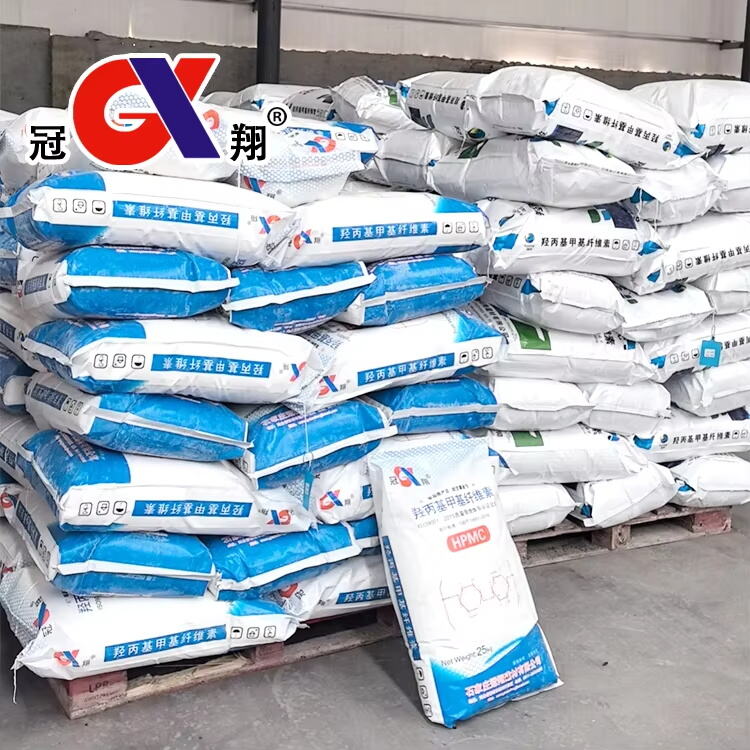Quid est Pulvis HPMC?
Definitio et Compositio Chemica
Hydroxypropyl-methylcellulose, vulgo HPMC, oritur e cellulose naturali pertractata ad auxendum id quod natura suppeditat. Quid huic substantiae praesertim insit? Est quod valde viscosa est et facile geli ficat, quod rationem reddit cur in omnibus rebus adhibeatur, ab medicamentis ad materiae structurales. Ipsa molecula tam hydroxypropyla quam methyl partes e cellulose vulgaris continet. Atque ecce rem mirabilem de structura eius: solubilitas variari potest propterea utrum in aqua calida vel frigida tractetur. Cuiquam qui cum HPMC operatur, scire quid in compositione chemica eius sit praesertim necessarium est. Criterium substitutionis et pondus moleculare non tantum numeri in charta sunt, sed directe efficiunt ut HPMC in variis conditionibus industriae variae optime fungatur.
Processus Productionis Synopsis
HPMC facere incipit cum cellulosae combinandae et per processum hydrolyses alcalinae mittendae, ubi cellulosae fibrillae transfigurantur in rem solubiliorem. Postquam tractatio chemica completa est, manufactores substantiam purificant, eamque siccant accurate, deniqueque in formam pulveris vertunt per technicas granulationis. Magnitudo particularum multum refert quia directe afficit quam viscosam aut solubilem productum finitum erit cum adhibetur. Laboratoria typice minores quantitates ad ficienda genera dum fabricae curant multo maiores volumina; tamen, quocumque modo, processus similes servantur ut HPMC respondeat ad necessitates clientium pro variis applicationibus in variis industriae rami.
Principales Proprietates Pulveris HPMC
Retentio Aquae et Caracteristica Solubilitatis
Pulvis HPMC magnam capacitatem retinendi aquam habet, remque humidam in omnibus generibus productorum manere facit. Haec proprietas praecipue in rebus ut in muris aedificatoriis et quibusdam victualibus conspicua est, ubi moderatio umoris constans magni momenti est. Quam HPMC dissolvatur pendet a duobus principibus factoribus: ipsius pondere moleculari et aequilibrio inter groupes hydroxypropylicas et methylicas in formula. Haec characteristicas determinant ubi HPMC optime valet in variis artibus sicut pharmaceuticis et victualiis conficiendis. Intellectus interactionis HPMC cum aqua dum processus fiunt omnem differentiam facit dum formulas creantur. Quaedam usus celerem liberationem componentium activorum postulant dum alii auctam moderationem umoris petunt, ita ut haec cognitio manufactores iuvet ut suos fructus statim rite fiant.
Thermal Gelation et Viscositatis Regulatio
Quod HPMC pulvis a multis aliis materialibus distinguit, est quomodo gelidum fit cum calefit, idoneum reddens ut sive crassator sive gellans in pluribus usibus. Cum temperatura circum eum variat, haec proprietas singularis HPMC permittit sese accommodare ut in unguentos cutaneos, cibos, vel etiam medicinas incorporari possit. Regulare, ut HPMC magis vel minus crassus fiant, pendet a quantitate addita et temperatura cui subiicitur. Hac ratione flexibilis, fabricatores in multis campis, sicut in conficiendis medicamentis, productis formae, et cibis elaboratis, magnopere in HPMC inniduntur. Conditio vera consistens necessaria est, ut producta bene cohaereant et constanter operentur, quod clientes sentiunt, sive id conscii sint sive non, per experientias cotidianas cum his productis.
HPMC in Applicationibus Pharmacologicis
Tabulettae Colligatio et Systemata Liberationis Regulatae
Hydroxypropyl-methylcellulose, vulgo HPMC notum, munere importante fungitur in sectore pharmaceutico ut copulativum principale tabularum. Quod pretiosum reddit est qualis bene cohaerescat durante processo fabricationis, quod melioribus tabulis confectis et rebus tutis efficit. Cum in formulis liberationis regulatae incorporatur, haec substantia adiuvat moderari celeritatem qua medicamentum in corpore liberatur, retinendo aequabilem concentrationem per diem. Investigatio e multis experimentis clinicis monstrat HPMC re vera augere quantitatem medicamenti quae ad locum destinatum in corpore pervenit, simulque medicamenta diutius stabilia retinet. Haec emendationes valent quia directe influunt utrum patientes medicamenta rite sumant et utrum curationes effectum propositum obtineant.
Solutiones Ophthalmicae et Formulationes Topicae
HPMC magnum momenti in cura oculorum esse coepit tamquam lubrificans et crassans, praesertim in illis quotidie guttis oculorum quas homines utuntur. Quod ipsum praestat est quod oculis tutum est et cum applicatur talem tegumentum protexit. Haec res mirabiliter valet ad medicamentum diutius in superficie oculi manere. Studia demonstrant cum HPMC includitur, patientes meliorem fere experientiam habere quod oculi eorum diutius manent madidi post applicationem guttarum. Pro his qui cure quotidiana indigent per diem, haec effectio prolongata significat minorem frequentiam applicationum et leviores curationes esse generatim.
Usus HPMC in Industria Alimentaria
Crassamentum in Salsis et Lacte PRODUCTS
HPMC satis populare factum est ut additamentum ad cibos, praesertim in salsis et lacteis generibus. Quod rem praecipue commendat, est facultas substantiam et crassitiem addere, minuendo tamen caloriarum numerum, quod optime convenit cum desideriis sanitate studiosorum. Pro salsorum confectoribus, hoc significat consequi texturam aequabilem sine separatione temporis filio. In lacteis item mixtum, HPMC meliorem sensum oris praebet et usum cibi generalem meliorat, quae res magni momenti est apud fabricatores. Nonnullae investigationes adiumenta ostendunt, ut separatio ingredientium prohibeatur et ut producti diuturnitas augeatur. Haec praecipua sunt cur tantae copiae commerciorum HPMC confidunt, ut cibi eorum bene visi et gustati sint a productione usque ad consummationem.
Gluten-Free Baking Applications
Producta sine glutine magno incremento popularitatis usque ad hanc diem gaudent, quae HPMC ingredientem praecipuum reddunt in multis compositionibus sine glutine. HPMC efficaciter munus glutinis in coctione tradita suscipit. Sine glutine, massae saepe siccis et friabilis sunt, sed HPMC flexibilitatem addit et formam idoneam cibis coctis praebet. Coqui laudant etiam quomodo humiditatem conservat, ut placentae post coctionem non evanescant. Experimenta demonstrant, cum HPMC additur, homines panes et pastilia sine glutine magis probare, quod melius sapore gaudent et minus elastica in ore sentiuntur. Ad segmentum mercati crescentis petendum, adiiciendo HPMC non solum utile est, sed necessarium fit, ut cum coemeteriis principalibus certet.

HPMC in compositionibus cosmeticis
Modificationes viscositatis shampoo
Hydroxypropyl methylcellulose (HPMC) praecipue locum tenet in multis shampoo compositionibus, quod adiuvat viscositatem vel tenuitatem producti regere. Modus quo shampoo manatur et in manu consistit magni momenti est, cum homines aestiment an de substantia optima sit. Cum manufactores quantitatem HPMC in misturam introducunt, omnifariam texturas consequuntur, a shampoo gelido densissimo usque ad liquidum leviusculum quod facile profluit. Haec flexibilitas sinit commercia facere, quae diversorum clientium desiderata de textura implent. Investigatio, quae saepius facta est, monstrat crassiora esse meliora aestimari. Hac ratione callidi formulatores HPMC in instrumentis suis retinent, dum shampoo creant, quae inter alia emineat in mercati loco.
Moisturizer Film-Forming Properties
Quoad emollientes attinet, HPMC sicut forma filmaria fungitur quae veram cutis hydrationem promovet. Hoc fit per formationem quaedam tegumenti in superficie cutis quod umorem in loco suo conservat. Emollientia continens HPMC melius operari solent quia cutem diutius quam producta sine hoc ingredienti manent hydrata. Aliud praeterea de HPMC in productis cutaneis est modus quo sensum producti applicati afficit. Multi inveniunt formulas cum HPMC facile supercurrere et non relinquere vestigia oleosa quae saepe cum emollientibus oleosis eveniunt. Pro his qui aliquid levis sed etiam effectivi quaerunt, hoc valde refert. Studia e dermatologis confirmant quod multi iam sciunt - formae filmariae syntheticae vere perficient quomodo emollientia operentur tempore et saepe meliorem applicationis cotidianae experientiam reddunt. Hac de causa ita multi marcas cosmeticorum ad HPMC in compositionibus suis nunc vertunt.
Construction Material Enhancements
Cement Mortar Water Retention
Hydroxypropyl Methylcellulose (HPMC) magnopere refert ad eam rem quam bene cementa mortaria aquam retinent, rem quae vere afficit quam facile sint in loco operari. Cum in mortarium mixta est, HPMC retinet idoneam humiditatem circa applicationem, ut mixtio nimis celeriter non siccetur. Hoc significat postea pauciores rimas formari et opus ultimum diutius durare. Curiosum est hanc aquae retentionis vim plus quam meliores structuras creare. In factum, aquam diutius servat quia minus addendum est durante conmixtione. Recentissimae investigationes ab associationibus materiae constructionis indicant manifestas utilitates, cum aedificatores HPMC in cementorum suorum formulas includunt. Haec additamenta adiuvant res conservare sine vi seu specie ultimae constructionis, ideoque consideranda sunt ab his, qui quaerunt meliora qualitatem et sustinibilitatem in operibus aedificandi.
Melioratio Adhaesionis Pavimentorum
Additio HPMC ad colla pro tesseris vere eorum operationem auget, eis meliorem viscositatem et aliquam necessariam flexibilitatem praestant pro tesseris diuturnioribus. Quod hoc tantum utilis est, est quod vim cisailem auget, quod significat haec colla in omnibus generibus superficierum, sive asperae sive leves, bene operantur. In rebus constructivis etiam vidimus. Exempli gratia, artifices in operibus balnearum reficiendis celeriores installationes nuntiant cum HPMC productis usi, et rarius tesseris solutis post annos usus. Materia ipsa in praxi melius operatur. Tesseris manent fixae absque rimis aut translationibus, eorum aspectum retinentes dum cotidianas difficultates sustinent. Propterea multi doctores HPMC nunc ingredientem necessarium in tessellis artis aestimant.
Considerationes de Environmento et Salute
Profilaxis Biodegradabilitatis
Hydroxypropyl Methylcellulose, sive HPMC ut vulgo dicitur, praecipue notatur quod sponte dissolvitur, ideoque electio viridis est pro societatibus quae nituntur minuere pedes carbonis sui. Cognitiones demonstrant quod, si relinquatur in quibusdam locis, HPMC revera cum tempore disrumpitur, non ut illae syntheticae plasteae quae solummodo manent et difficultates creant. Id quod a natura ipso dissolvi potest, idcirco complures fabricatores HPMC in suis operibus amicis environmentalibus hodie introducunt. Atque ut verum fateamur, clientes hodie diligentius quam prius quaerunt unde res eorum proficiscantur. Itaque rem habere quae post usum evanescat, HPMC praecipuum praetervetustis alternativis chemicis quae adhuc in sterquiliniis manent saeculo post saeculum, praerogativam praebet.
Complentia Regulatoria Trans Industriis
Quoad regulas, HPMC omnia praecipua complent quae ab organisationibus magnis, ut FDA et EU, postulantur. Ingredienti summae probationes institutae sunt et approbatae ad usum in compluribus vitae nostrae partibus, ab alimentis quae edimus ad medicinas quas sumimus et etiam ad cosmetica quae adhibemus. Eorum qui cum HPMC compositionibus operantur, documenta sane utilis ab his regulis praesto sunt. Explicantur exacte quae sint admittenda concentra et subministrantur minutae tutelae aestimationes quae ad usum in rebus gerendis rationem habent. Hoc satis facit manufacturis dum nova genera efficiunt quod multa dubia circa legum adimplentionem tolluntur. Itaque HPMC percrebrescit in variis manufacturae partibus ubi cura de qualitate et salute consumerum semper praecipua manet.
FAQ
Quae sunt applicationes principales pulveris HPMC?
Pulvis HPMC in medicinis, industria cibaria, cosmetico, et constructionis materiae praecipue propter viscositatem et aquae retentionem proprietates utitur.
Quomodo HPMC in coctione sine gluteno meliorat?
HPMC imitatur retem glutinin, praebens elasticitatem et volumen ad massas et pastas sine glutine, meliorans texturam et qualitates sensorias ciborum coctorum.
Num HPMC biodegradabile est?
Ita, HPMC biodegradabile est sub certis conditionibus, ideoque optio amica ambientis comparata cum aliis polymeris syntheticis est.
Cur usus HPMC in cosmetico?
HPMC usurpatur propter proprietates eius film-formandas quae iuvant hydrationem cutis et formam producti, praebens sensum non-unguenti.
Quae sunt normae legales quibus HPMC convenit?
HPMC convenit normis de tutela quas statuerunt FDA et Foedus Europaeum, securam usum in variis campis, inter pharmacologia, cibum et cosmetica.
 EN
EN
 AR
AR
 CS
CS
 DA
DA
 NL
NL
 FI
FI
 FR
FR
 DE
DE
 EL
EL
 HI
HI
 IT
IT
 JA
JA
 KO
KO
 NO
NO
 PL
PL
 PT
PT
 RO
RO
 RU
RU
 ES
ES
 SV
SV
 IW
IW
 ID
ID
 SR
SR
 SK
SK
 UK
UK
 VI
VI
 HU
HU
 TH
TH
 TR
TR
 AF
AF
 MS
MS
 CY
CY
 IS
IS
 BN
BN
 LO
LO
 LA
LA
 NE
NE
 MY
MY
 KK
KK
 UZ
UZ


